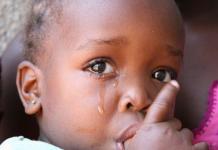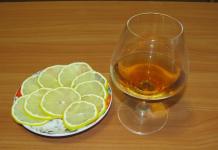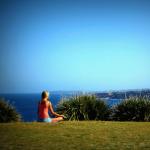Slide 2
Completed by: Gekman Timur, 8th grade student of KSU "Osh school in Russkaya Ivanovka" Supervisor: Shtork Oksana Aleksandrovna teacher of chemistry and biology
Slide 3

The object of the study was the method of growing plants without soil - hydroponics. Based on the experiment, comparison and analysis of the results, we find out when it is possible to get a larger yield of green onions by growing them in snow water, soil from the garden, or onions grown using hydroponics. As a result of observations, it was possible to establish that when growing onions in a hydroponic installation, the feather reached the required length in 23 days, and this is several days ahead of schedule, while the onion greens are more juicy and pleasant to the taste. Growing onions using the hydroponics method will significantly save resources and obtain good harvest. Green onions are an excellent way to replenish vitamins, especially in winter and during the period of spring vitamin deficiency.
Annotation
Slide 4

As part of the project, I learned a lot of new things, including that onions and garlic rank third among healthy products. Green onions are an excellent way to replenish vitamins, especially in winter and during the period of spring vitamin deficiency. It contains vitamins B, C, E, PP, carotene, organic acids, potassium, phosphorus, calcium, iron, phytoncides, which will protect the body from diseases. Having conducted a sociological survey among students at our school and processed the results, I came to the conclusion that children rarely use onions for food, preferring green onions. Unfortunately, green onions, bought in a store, cannot be stored for long, it fades and loses its beneficial properties. Home grown onions - optimal solution problems: I suggest growing onions yourself.
Relevance
Slide 5

Object of study: hydroponics - as a method of growing plants without soil. Subject of research: onions. Hypothesis: if you grow onions using hydroponics, you can get a good harvest that allows you to provide yourself with vitamins all year round. The goal of the project: to find out whether hydroponics is the most productive way to grow onions for greens in the winter. Project objectives: to study the literature on growing vegetables using hydroponics; make a hydroponic vessel for growing plants; conduct experiments on growing onions in various ways; summarize the results of the experiment.
Slide 6

Advantages of growing plants using hydroponics
The plant grows strong and healthy, and much faster than in soil. Plant roots do not suffer from drying out or lack of oxygen due to waterlogging. Water consumption is easier to control; there is no need to water the plants every day. There is no problem of lack of fertilizers or their overdose. Many problems of soil pests and diseases disappear, which eliminates the use of pesticides. There is no need to buy new soil for replanting, which greatly reduces the cost of growing plants. Since the plant receives only the elements it needs, it does not accumulate substances harmful to human health that are inevitably present in the soil, which is very important for vegetable plants.
Slide 7

Preparing onions for planting 2. Preparing dishes for planting Glass with snow water 2) Flower pot with soil 3) Hydroponic installation
Experimental part
Slide 8

Manufacturing hydroponic setup
Slide 9

Watching onions grow
Day 3
Slide 10

Day 9
12 day
Day 15
Day 18
Growing greens at home using a hydroponic system " home garden» Project manager: Tamara Mikhailovna Ismailova Completed by: Alexander Savelyev, student of grade 5 “D”
Goal: to identify the advantages of growing edible greens using hydroponics in a school setting
Hypothesis: growing food greens using the hydroponics method has a number of advantages over the soil method
Relevance Currently, we have the opportunity to see a wide range of products on the shelves, including salads and herbs. But, unfortunately, store-bought greens and salads lose their freshness the very next day, and a day later, most often, they can be thrown away. It’s good if it’s regular parsley or dill, but what if it’s basil, thyme or mint for tea? Finding them in good condition in a store is not easy, and they are not cheap. In addition, these types of greens are used little by little, and you have to buy them in packages, the remaining contents of which are simply thrown away. By growing these greens ourselves, and even in hydroponic systems, we can cut them as we consume them, without causing damage to either the quality of the product or the plant itself.
Hydroponics is a method of growing plants without soil, in which the plant obtains all the necessary nutrients from a solution. required quantities and exact proportions (which is almost impossible to achieve when growing in soil). You can use a bucket or flower pot, filled with substrate and irrigation with a hydroponic solution. A sheet of foam with holes into which pots are inserted floats on the surface of water in a bath of aerated solution - also hydroponics and this system is very popular for simple educational school projects. But, thanks to the “Kurchatov Project”, we were able to use a special hydroponic installation “Home Garden”.
In order to carry out the practical part of the project, we studied a lot of information from various sites on the Internet, where people who were passionate about the hydroponics method shared their experience and gave recommendations. Of course, literary sources were selected. We especially had to study specifically the “Home Garden” installation
We assembled the “Home Garden” installations in advance, according to the existing instructions. CONTENTS Sterile substrate (perlite) for one growing cycle Lettuce seeds A set of fertilizers for non-fruit-bearing plants. Devices for seeds (pots) Transparent plastic caps to create a greenhouse effect during seed germination Growth lamp
Each pot was filled with perlite (white granules that are included with the installation).
To compare and identify the advantages of plants grown using hydroponics, we sowed the seeds of the same plants in the ground, in a plastic pot. To organize the same conditions in all respects, except for the presence of soil, we placed this pot in the “Home Garden” device, replacing the bowl of water with a pot of soil.
We covered the seeds with mini-greenhouse lids and did not remove them until the seeds germinate. This will create a greenhouse effect during the seed germination period. Set the desired operating mode of the settings on the panel: “Salad”. All plants (experimental and control groups) were placed in the same conditions: laboratory assistant's office biology school.
After three days, the seeds began to germinate. When the sprouts appear, the mini-greenhouses need to be removed and stored until the next seed germination (they are reusable).
Three weeks later we received our harvest.
Conclusions Lettuce in the “Home Garden” installation grows several times faster. Fast growth due to compliance with cultivation technology. At hydroponic method growing, plants do not have to compete for nutrients, as happens with soil cultivation, they get everything they need from the nutrient solution.
Conclusion By observing the growth and development of the plants in the project, we became convinced that hydroponics as a method is very promising. Hydroponics is a method of growing plants without soil, which allows us to save the planet’s much needed resources today: water and soil. We are ready to continue our research and grow various types of food greens, vegetables and flowering plants.
"Hydroponic growing of vegetables
at the polar boarding school"
Summary project:
exploring opportunities and organizing
greenhouse farming
in the conditions of a polar boarding school
The project has been prepared:
students of the 9th grade Tusida Vitalina Sergeevna, Vanuito Tatyana Eduardovna, geography teacher Marina Valterovna Pasynkova, project work leader
Name of educational institution/place of work - Municipal budget educational institution "Seyakhinskaya boarding school"
Name municipality - Yamal district
Name settlement – Seyakha village
2015
Content
1. Introduction……………………………………………………………………….3
2. Main part
2.1. Justification of the relevance of the project…………………………………….4
2.2.Goals and objectives of the project…………………….……………………………...…..4
2.3. Project implementation timeline………………………………..……………...…..4
2.4. Contents of the project……………………………………………………….5-8
project implementation plan
project management scheme within the territory
2.5.Used and necessary resources……………………………..…....9
2.6.Evaluation methods (criteria for assessing project effectiveness)……….… …9
2.7.Results, prospects for project development, long-term effect.... 10
3. Conclusion……………………………………………………………………20
Introduction
AND  The history of the Seyakha boarding school begins in the 30s of the 20th century. The school of that time does not resemble the current one in any way: a narrow dark corridor, on the left are classrooms, on the right is the dining room and rooms where the teachers live; temporary stoves; in the classrooms there are homemade lamps with glass from cans. The first students under the dim light of a kerosene lamp and the crackling homemade stove with unskilled hands they wrote the first handwritten words in their lives on the priceless paper of their school notebooks.
The history of the Seyakha boarding school begins in the 30s of the 20th century. The school of that time does not resemble the current one in any way: a narrow dark corridor, on the left are classrooms, on the right is the dining room and rooms where the teachers live; temporary stoves; in the classrooms there are homemade lamps with glass from cans. The first students under the dim light of a kerosene lamp and the crackling homemade stove with unskilled hands they wrote the first handwritten words in their lives on the priceless paper of their school notebooks.
 At that time, there were traveling teachers who, together with the “Red Plague,” traveled across the tundra and taught tundra dwellers, adults and children to read and write. The “Red Plague” existed for ten years, from 1943 to 1953. In 1956, a new school building was built. All this time the school remained primary. The transition to an eight-year school began in 1967, and the first graduation took place in 1972. There were only five graduates. In 1977, it was decided to make the Seyakha boarding school a secondary school.
At that time, there were traveling teachers who, together with the “Red Plague,” traveled across the tundra and taught tundra dwellers, adults and children to read and write. The “Red Plague” existed for ten years, from 1943 to 1953. In 1956, a new school building was built. All this time the school remained primary. The transition to an eight-year school began in 1967, and the first graduation took place in 1972. There were only five graduates. In 1977, it was decided to make the Seyakha boarding school a secondary school.
WITH 

 Today MBOU "Seyakhinskaya SHI" is a modern educational institution, in which, taking into account the priority directions of development of the education system of the country and the Yamal-Nenets Autonomous Okrug, a holistic strategic development line has been built. The staff of the boarding school is implementing the model of a social park as a mechanism for increasing socio-cultural performance general education boarding schools of the Far North. The social and pedagogical mission of the boarding school is creation of sufficient and necessary educational conditions for the social success of boarding school students and graduates
.
As part of the development program, the idea of “technology parks” was transferred to the social sphere for testing, implementation and use in educational process social technologies that help expand the social-role repertoire of students, ensure the successful socialization of boarding school graduates, and also use the capabilities of the educational institution to solve socially significant problems of society.
Today MBOU "Seyakhinskaya SHI" is a modern educational institution, in which, taking into account the priority directions of development of the education system of the country and the Yamal-Nenets Autonomous Okrug, a holistic strategic development line has been built. The staff of the boarding school is implementing the model of a social park as a mechanism for increasing socio-cultural performance general education boarding schools of the Far North. The social and pedagogical mission of the boarding school is creation of sufficient and necessary educational conditions for the social success of boarding school students and graduates
.
As part of the development program, the idea of “technology parks” was transferred to the social sphere for testing, implementation and use in educational process social technologies that help expand the social-role repertoire of students, ensure the successful socialization of boarding school graduates, and also use the capabilities of the educational institution to solve socially significant problems of society.
Thus, the MBOU “Seyakhinskaya SHI” is a well-thought-out, modern and future-oriented social park. All conditions have been created here to improve education, develop curiosity, research skills, and creativity.
2. Main part
2.1. Rationale relevance of the project
Today, there are 536 students studying at the Seyakha boarding school, of which 474 students are representatives of the indigenous peoples of the North (Nenets), 56% of them live in cozy and modern boarding buildings. By the time most students graduate from school, they have an idea of the world around them, but not all children, even studying in the 11th grade, have traveled outside the village, tundra and in reality seen cities, villages, groves, oak groves or pine forests; not all students have an idea of how potatoes grow or tomatoes. Those. There are students who have only theoretical knowledge in many branches of biology, while children from middle zone Russians, even without studying these sections at school, have great knowledge of botany, because they learned it in everyday life. Therefore, we decided to find out how our peers and teachers would react to the fact that in a boarding school work was organized on equipping a small, but modern greenhouse, where it was possible to conduct classes in botany, get acquainted with modern hydroponic equipment, and new “green technologies” used in agronomy.
Relevance of this project in the possibility of:
- organizing environmental education for schoolchildren;
- involving students in the system of modern financial and economic relations (basics of agricultural technology, scientific and experimental work);
- formation of social and labor competencies of schoolchildren, with subsequent professional self-determination of students on the basis of specialized education;
and demand from children, their parents, and teachers.
2.2. Project goal:
Creation of a project for a greenhouse corner “Hydroponic Greenhouse” for conducting extracurricular activities for environmentally oriented students.
Project objectives:
Explore the possibilities of creating a greenhouse corner in a boarding school.
Analyze the experience of domestic and foreign hydroponic cultivation of vegetables.
Create an information base for project development
Create a greenhouse project.
2.3. Project implementation period: 2014-2015.


![]()
2.4. Project content with justification for the feasibility of the decision
problems
When solving problem 1, we decided to study the possibilities of creating a greenhouse corner in a boarding school. For this purpose in In February 2014, we conducted a study (questionnaire) to determine the possibility of organizing a greenhouse boarding school in recreation. After surveying 202 people, we learned that 62% of children have heard about greenhouses, but doubt that a greenhouse can be organized in a boarding school; 37% of students believe that in “our greenhouse” it would be possible to grow cucumbers, dill, and tomatoes for needs of the boarding school canteens, 30% of the children surveyed were clearly interested in having a club related to greenhouse farming. When analyzing the questionnaires, it was possible to find out that primary and secondary school students show greater interest in the greenhouse. In addition, those children who have never seen how vegetables are grown (i.e. children of indigenous nationality) want to study in such a circle.
Thus, after conducting a little research, we came to the conclusion that such an environmental direction as creating a greenhouse corner in a boarding school would be relevant for children in grades 1-6. Moreover, training according to new state standards implies that additional education (clubs) must meet new requirements. In addition, we admit that working in a greenhouse, conducting simple experiments, economic calculations, will interest some students, and will help some of them choose a further professional path in life.
To implement the Hydroponic Greenhouse project, we identified a room in which a greenhouse could later be placed.
We approached the director of the boarding school with this idea, discussed the idea, received recommendations and approval to create the project.
For the greenhouse project with hydroponic irrigation, we were promised a premises in a recreation area with an area of 45.5 square meters.

IN 
 On the Internet we found the necessary literature (the magazine “Hydroponics in Russia and the CIS countries”, “Hydroponics Manual” by Kate Roberto, the book “Growing Plants Without Soil”, V.A. Chesnokova, etc.) and recommendations for using the equipment that we offer place in recreation.
On the Internet we found the necessary literature (the magazine “Hydroponics in Russia and the CIS countries”, “Hydroponics Manual” by Kate Roberto, the book “Growing Plants Without Soil”, V.A. Chesnokova, etc.) and recommendations for using the equipment that we offer place in recreation.
Also on the Internet we found the cost and types of equipment that the authors of hydroponics manuals recommended to us. Based on domestic and foreign experience in growing plants, we have placed in paper format the equipment necessary for the construction and operation of the greenhouse.
Layout of equipment arrangement in the greenhouse

Briefly about the essence of the project "Hydroponic greenhouse"
When implementing the project "Hydroponic greenhouse" equipment is placed in the recreation: hydroponic installations for growing greens and seedlings, flowers for landscaping a boarding school, as well as special containers with coconut substrate placed in them, which are used for growing vegetables. The purchased racks are built in on the left side; containers with coconut substrate are installed on the racks. To the right, on the benches, a hydroponic system is installed. Agricultural lamps are mounted on the walls and are used to supply plants with the required spectrum of light. An air purification and humidification system, infrared heater panels with a thermostat will create the desired atmosphere in the room. In addition, the recreation area will be closed glass partition– doors, required strength and composition. A green corner will not only decorate the recreation, but will arouse interest and desire to work in the greenhouse. After all, students who receive additional knowledge in the “Greenhouse” club will participate in the development of “green” technologies (a current environmental trend). Plants grown using hydroponics (in test tubes on a nutrient substrate) are propagated by cuttings under conditions of controlled photosynthesis (agricultural lamps). This technology is characterized by the fact that plant development is much faster and safer than in natural conditions, because in sterile vessels no viral or bacterial infection is scary for plant roots, and this helps to minimize production costs and increase the profitability of the process of growing vegetables.
Project Implementation Plan
Modeling, goal setting, determination of tactics,
organizational stage (autumn 2014)
Events
Deadlines
Content
Responsible
Discussion
September2014
Creation of a working group to work on the project.
Analysis of domestic and foreign experience in hydroponic cultivation of vegetables, formation information base for project development.
Exploring the possibilities of a boarding school to create a greenhouse corner
Determination of the main areas of work, the necessary material, technical, methodological and human resources
Working group:
Tusida Vitalina, Vanuito Tatyana, 9th grade students
Pasynkova M.V., Deputy Director for Scientific and Methodological Work
Organizational stage
October-December
2014
Internet search for building materials and special equipment for equipping a greenhouse corner
Working group
Creation of the project, (January-March 2015)
Creating a Project
January-March 2015
Working group
Replenishment of the material and technical base of methodological support for the UVP (in case of sponsorship)
During the 2014-2015 academic year
Search on the Internet and, if possible, order:
Administration boarding school
racks, benches, infrared panel heater, thermostat, agricultural lamps, air purification and humidification systems
modular hydroponic system drip irrigation, a set of fertilizers for hydroponics
coconut substrate in a set with fertilizers for coconut substrate, agroperlite
methodological manuals, educational literature, electronic educational resources for teachers and students
Development of a work plan for a circle of extracurricular activities with an environmental focus
Biology teachers
Result: organizational work was completed, a working group was formed to ensure the creation of the project, priorities for creating a greenhouse project were determined, the necessary equipment was found, the project was designed
Plan for working out the next steps in the case of organizing a hydroponic greenhouse
Elaboration legal issues and everyone necessary documents(boarding school lawyer).
Design development appearance hydroponic greenhouse.
Development of an estimate for equipment of a hydroponic greenhouse.
Concluding contracts for the purchase and transportation of goods.
Selection of teaching staff.
Purchase and equipment of a hydroponic greenhouse.
Acceptance of the object by the SES, the Ministry of Emergency Situations and launch of the object.
Branding
Launch of a page on the boarding school website
Necessary documentation for the operation of the facility
Inclusion of the object in the Boarding School License.
SES permission
Permission from the Ministry of Emergency Situations
Regulations on the infrastructure “Ecological center - hydroponic greenhouse” in the conditions of a polar boarding school.
Other local acts relating to the operation of the facility.
Main parameters of the “Hydroponic greenhouse” object
Demand, compactness, comfort.
Cheapness.
Originality and attractiveness.
Mobility (if desired, the idea can be extended to the territory of the Yamal-Nenets Autonomous Okrug).
Budget for the Hydroponic Greenhouse project
Type of equipment
Quantity
Cost of each item
Total cost
Collapsible technological rack STR-224
1200x500x1830
15 371
61484
Dressing bench SG-1000
2740
13 700
Infrared heater-panel, STEP-800 1.8x 0.59
4800
9600
Thermoregulator (for heating panels) TP 710
2990
5980
Agricultural lamp T8 8x18W
7000.00 rub.
21 000
Air purification and humidification system "Panasonic" F-VXD50R
24 900
24 900
Stepladder, 3 steps
1317
1317
Stationary partition NAYADA-Standart
30000
30000
UGro Pot 9 - coconut substrate
200
420
84000
Fertilizer set for coconut substrate (300 l of water)
Hesi Coco Starter
3000.00 rub.
9000
Agroperlite (raising agent for soil or substrate) - 2 kg
229 RUR
11450
Modular hydroponic drip irrigation system.
Number of seats: 24
DutchPot System Hydro 2m 2 GHE
L220/W100/H67cm Seats: 24
38900
77800
Hesi Hydro Starter - a set of fertilizers for hydroponics
3000 rub.
9000 rub.
Dry fertilizers –
Nitrogen-phosphorus-potassium fertilizer 13:19:19 1 kg
120 rub.
120 rub.
Fertilizer Azofoska 16:16:16 1 kg
120 rub.
120 rub.
Fertilizer Diammofoska 10:26:26 1 kg
140 rub.
140 rub.
Fertilizer Urea 1 kg
120 rub.
120 rub.
Fertilizer Ammonium nitrate 1 kg
100 rub
100 rub
Fertilizer Ammonium sulfate 1 kg
80 rub
80 rub
Fertilizer Potassium sulfate (Potassium sulfate) 1 kg
220 rub.
220 rub.
Fertilizer Superphosphate 1 kg
130 rub.
130 rub.
1030
Total
RUB 360,261
Scheme of project management within the territory
Basic control parameters:
Security
organization, efficiency of the expected result;
activity, prognosis (the ability to predict one’s actions in relation to the environment), democracy;
monitoring, planning, organization, control.
Design activities
studying the opinions of UVP participants;
formulation of goals and objectives;
project development;
predicting results;
development of criteria and mechanism for evaluating results
Monitoring
dynamics of readiness to visit the “Greenhouse” circle;
quality of education
in biology in subsequent grades;
survey
Security
work
creative team for project development and program implementation
mug
Project implementation
Teacher consultants;
EXPECTED RESULT OF THE PROJECT IMPLEMENTATION
Reflective activity
Ensuring and exercising administration control over project activities
2.5. Resources used and necessary to support the project:
a) human resources
Working group developing the project:
Tusida Vitalina, 9th grade student
Vanuito Tatyana, 9th grade student
Pasynkova M.V. - Deputy Director for Science and Technology, Geography teacher
Working group ready to work on the project as part of extracurricular activities:
Nekrasova L.N., teacher of biology, chemistry
Zolotareva M.I., teacher of biology, chemistry
Murzakhmetova G.Zh., Deputy Director for ACh
Maryik E.S., boarding school lawyer
Information about the main project implementers
Full name
Position in the project
Responsibilities
Place of work, study
Pasynkova Marina Valterovna
Project manager, advisory assistance
Providing all the content materials necessary for the implementation of the project, studying documents, holding discussions with participants, providing advisory assistance
Deputy Director for Scientific and Methodological Work, Geography Teacher
Tusida Vitalina
Project Creator
Development of a greenhouse project using modern “green technologies”
9th grade student
Vanuito Tatyana
Project Creator
Development of a greenhouse project using modern “green technologies”
9th grade student
b) methodological support
manuals on greenhouse management, educational and popular science literature, etc.
c) logistics and information support
Premises that could be used during the project implementation:
recreation for equipping greenhouses, a toilet room, a workshop, a vegetable storage room in the school canteen, a biology and chemistry classroom, a computer class with Internet access.
Equipment that could be used during the project:
multimedia equipment, equipment necessary for working in the greenhouse, stereo system, digital camera, video camera.
2.6.Evaluation methods (criteria for assessing project effectiveness)
Monitoring
Name
2016
2017
2018
Positive dynamics of readiness to attend the Greenhouse club.
Questionnaire
30%
32%
35%
Positive dynamics in the quality of biology education in subsequent grades
35%
40%
50%
Increasing positive reviews of the Hydroponic Greenhouse project
50%
55%
60%
Questionnaire about the significance of the project, the attitude of parents, teachers and the public to the project
60%
70%
80%
Risks (conditions of occurrence, methods of elimination)
Among the main factors that can influence the results of the introduction and implementation of the project are the following:
Risk factor
Possible solutions
Shortage budget financing economic activity boarding school
search for sponsorship
attracting additional material resources to the issue through the project’s participation in grant events at various levels
attracting sponsorship through advertising activities about the progress of the project (media of the boarding school, Yamal region, regional media)
Lack of necessary premises
refusal to provide the necessary premises by the administration of the boarding school
Lack of positive support from the parent community
Conducting explanatory work with parents and the public through speeches on school television and on the website of the school, district, district
2.7. R results, prospects for project development, long-term effect
In case of a positive decision and material support for our project, the work of the “Ecological Center” infrastructure at the boarding school would be organized in a new direction - the development of “green” technologies in the conditions of the polar boarding school. This direction is currently relevant, because during project implementation "Hydroponic greenhouse" grown plants are propagated by cuttings, grown in test tubes on a nutrient substrate, under conditions of controlled photosynthesis.
This technology is characterized by the fact that the development of plants when using hydroponics is much faster and safer than in natural conditions, because in sterile vessels no viral or bacterial infection of plant roots is scary, and this helps to minimize production costs and increase the profitability of the process of growing vegetables.
Further implementation of the project according to plan is carried out by a team of biology teachers. Teachers have developed a program of extracurricular activities for students “PARNICHOK”, as well as didactic materials.
Thus, the boarding school will create conditions for the development of high-quality environmental education. Students, studying in the "PARNICHOK" club, will receive primary social and labor competencies, with can navigate inbasics of agricultural technology, will trained in the simplest techniques for growing plants in a hydroponic garden . In addition, it is important that The boarding school canteens will receive additional fortified food - fresh vegetables and herbs, which are so rarely served on schoolchildren's tables.
Possibility of using the project by other participants of the OP
The proposed model can be used by other schools.
In case of financial support from sponsors, the project can be implemented, because To implement this direction, all resources are available, except material ones.



















